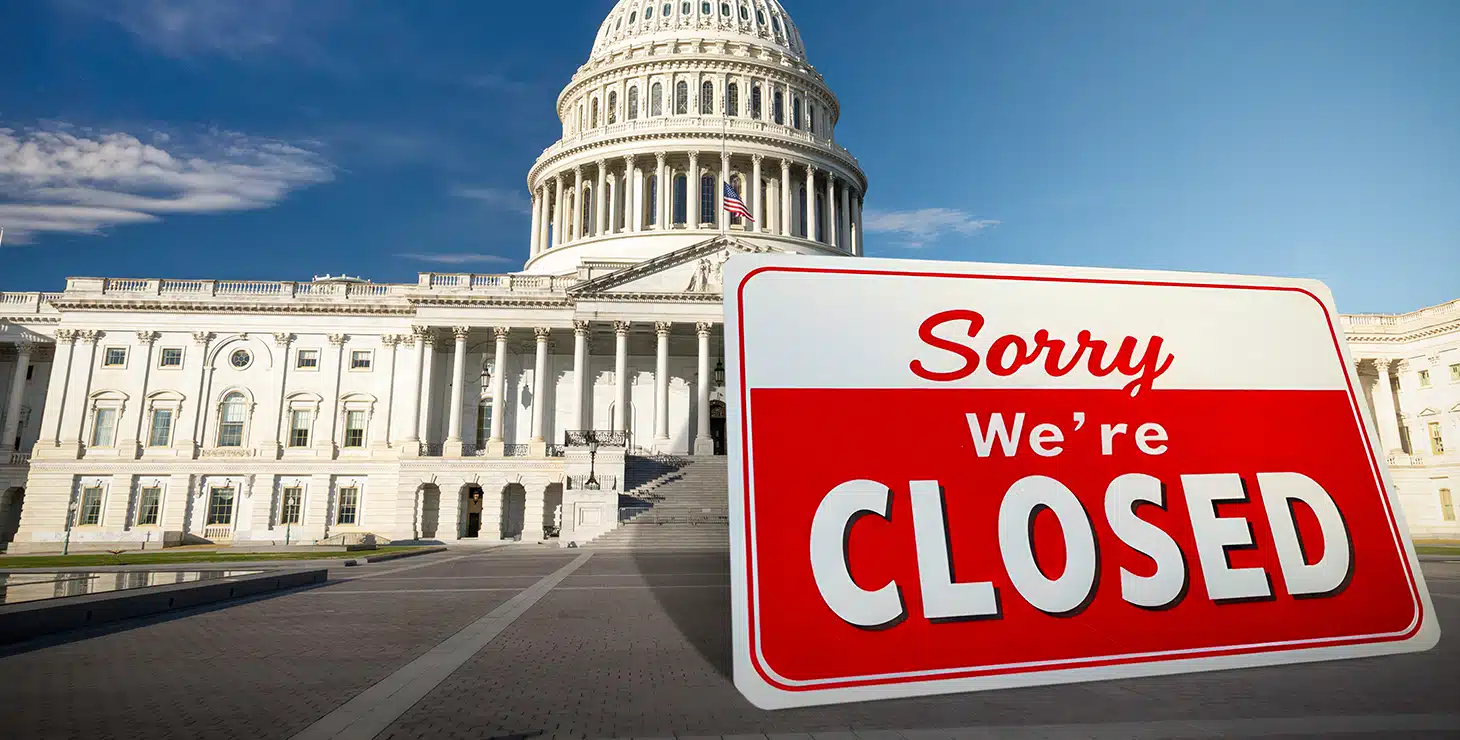A federal government shutdown is a story the country has seen many times before, but this round feels different. Both sides are dug in, and the stalemate has already sidelined agencies that commercial real estate depends on.
The duration will drive the severity. A brief shutdown is noisy but manageable, but a multi-week standoff compounds the drag on GDP and weighs heavily on revenues in federal-centric and tourism markets. With federal market data releases in limbo, private proxies like payroll panels, card-spend trackers, and online travel booking tallies become the default gauges for activity.
History shows the cost of these standoffs. The 2018–19 shutdown stretched 35 days and the Congressional Budget Office estimated $11 billion in lost output, with $3 billion permanently gone. The 2013 shutdown, which lasted 16 days, trimmed roughly $20 billion from GDP. In both cases, delays in government services triggered ripple effects in markets that rely on federal approvals and guidance.
How a Shutdown Disrupts Federal Backed CRE Projects
The most immediate impact on CRE is the delay of projects tied to federally backed financing. Environmental consultants supporting HUD and SBA loans face stalled assignments as agency staff remain offline, often forcing teams to reshuffle workloads and pivot resources to non-federal projects. Payment delays can also complicate cash flow and make revenue forecasting more difficult.
The disruption extends to data. When agencies like the Bureau of Labor Statistics and the Bureau of Economic Analysis stop publishing, markets lose access to the official benchmarks that underpin forecasts and lending decisions. Analysts and consultants must rely on private data sources that do not always align with federal standards. This creates a gap in confidence that slows deal flow and raises the risk of inconsistencies when reviews resume.
The impact is also uneven across regions. Areas with a high share of federal workers, such as Washington, D.C., Maryland, and Northern Virginia, feel the strain first as paychecks pause and spending dips. Tourism-driven markets like Orlando, Las Vegas, and Honolulu can see softer hotel performance and reduced foot traffic when national parks and cultural sites close. Early travel tallies already suggest weaker bookings in these metros. Larger, more diversified markets such as New York, San Francisco, Denver, Phoenix, and Tampa are typically better positioned to absorb the disruption, although financing challenges and cap-rate pressure remain underlying headwinds.
Shutdowns also create backlogs. Each day without agency staff in place means a larger pile of projects waiting for clearance once government funding is restored. For environmental consultants, that means compressed timelines, heavier workloads, and the possibility of bottlenecks when lenders push to close delayed deals quickly.
The net result is a period where market participants are forced to make decisions with incomplete information and where consulting firms bear additional pressure to bridge the gap.
Specific Risks for Environmental Professionals
For environmental consultants, the shutdown translates into very specific risks that go beyond general market uncertainty. The most immediate is the delay of projects tied to federally backed financing. Assignments connected to HUD and SBA loans cannot move forward without agency staff in place, leaving firms with idle work and clients with stalled timelines.
Documentation is another pressure point. When federal guidance or required forms are frozen mid-process, consultants face ambiguity about scope and compliance. That uncertainty raises liability concerns if lenders push for workarounds or require assurances that cannot be fully supported during a shutdown.
There is also the issue of workload compression. Once agencies reopen, the backlog of projects comes flooding back. Lenders often want deals closed quickly after a pause, which forces consultants to deliver at accelerated speeds while still maintaining the same quality and regulatory standards. The burden falls on firms to scale up capacity on short notice.
Margins can suffer as well. Shutdown-related delays shift schedules, strain staffing, and create pressure to take on more risk or faster turn times without proportional compensation. In a competitive field, some firms may feel compelled to absorb those costs to preserve client relationships.
The result is a period of heightened stress for environmental professionals: stalled revenue in the short term, followed by an intense push to clear backlogs once the shutdown ends.
How Consultants Adapt When Federal Data and Programs Stall
A shutdown forces environmental professionals to work without the federal data and approvals that normally guide their reports. With official releases from agencies like the Bureau of Labor Statistics and the Census Bureau on hold, consultants and lenders are left to rely on alternative sources of information. That reliance can keep projects moving, but it also raises questions about consistency once agencies reopen and the official benchmarks return.
In practice, consultants lean more heavily on private data providers and technology platforms during these periods. Historical records, property databases, and environmental datasets become the stand-ins for federal information that is temporarily unavailable. Workflow systems that help track compliance and manage reporting also play a role in keeping assignments organized during the uncertainty.
LightBox is part of this ecosystem. Its environmental data packages, risk screening tools, and platforms such as LightBox Live are examples of resources consultants can use to bridge gaps while federal programs are stalled. They sit alongside other private datasets and technology solutions that help environmental professionals maintain continuity when government sources go offline.
What Comes Next
Shutdowns never last forever, but their aftershocks can linger. The test for October is not only how long the standoff continues, but how quickly federal programs recover once funding is restored. For environmental professionals, the real challenge may be the surge of work that follows and whether firms can meet demand without sacrificing quality.
LightBox will continue to track the signals that matter for commercial real estate and environmental professionals and share insights as the situation unfolds.
